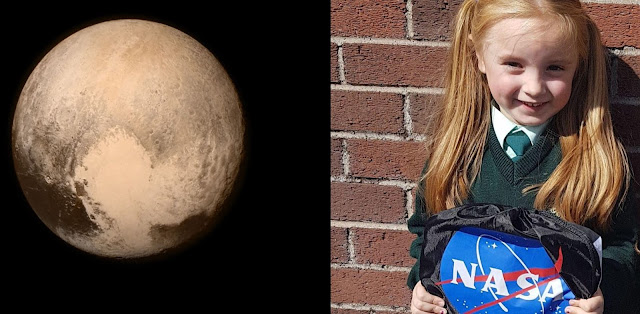This One Gif Is Better Than Anything Else You'll See Today
This Gif is the best and there is no better than this on internet. Not even your cats or dogs videos. You are wondering what is it exactly. Well it is next target for NASA’s New Horizons mission. A small rock in the outer skirts of our solar system, passed in front of a star as seen from Earth. The event in the early morning of July 17 lasted a split-second, but it will give us more information about this rock than we’ve ever gleaned before. All from the shadow that was cast over our planet.
“It was the most historic occultation on the face of the Earth,” NASA’s director of planetary science, Jim Green, told the team in a statement.
The Kuiper Belt Object (KBO) is called 2014 MU69. It measures roughly 22 to 40 kilometers (14 to 25 miles) across, but we don’t know for sure because it’s so far away and faint. It orbits 40 times further from the Sun than Earth.
We also don’t really know what it looks like. It’s thought to be a leftover from the formation of our Solar System about 4.6 billion years ago, but its exact characteristics still remain a mystery. Some artist’s impressions show it as a little reddish place, other estimations say it will probably look more like a grey asteroid. New Horizons will be flying past the object on January 1, 2019. Before then, the team want to get as much data on Kuiper Belt Object (KBO) as possible, which is why these events – known as occultations – are so important.
This was the third occultation to occur, after previous events on June 3 and 10. On this event, at least five mobile telescopes in Argentina are thought to have seen the shadow of the object as it passed over Earth, from which data will be gleaned. Other telescopes also observed the shadow, including NASA’s mobile flying observatory, SOFIA.
Alan Stern, the principal investigator on the New Horizons mission, told IFLScience that they expected to have the first results from these events in a few weeks.
“We spied the shape and size of 2014 MU69 for the first time, a Kuiper Belt scientific treasure we will explore just over 17 months from now,” he said in a statement. “Thanks to this success we can now plan the upcoming flyby with much more confidence.”
"We did it!" he added. Jolly good.


Comments
Post a Comment